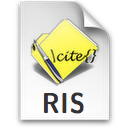

| ORIGINAL ARTICLE |
 |
 |
Human destructive influence on the aquatic environment is in the form of subethal pollution, which results in chronic stress conditions that have a negative effect on aquatic life. Alterations in biochemical and genomic content of selected tissues of snail Pila globosa under copper and mercury sublethal toxicity was evaluated. In acute treatment, snails were exposed to sublethal doses of 0.88 ppm and 0.475 ppm of copper and mercury, respectively, for up to 96 hours. During chronic treatment, test animals were exposed to sublethal doses of 0.176 ppm and 0.095 ppm of copper and mercury respectively, for up to 28 days. Significant depletion in the total carbohydrate, total protein, total lipid, total DNA and total RNA content were found compared to controls with an increasing exposure period in all studied tissues of Pila globosa after acute and chronic treatment with copper and mercury. Heavy metals can cause oxidative stress in molluscs, which causes depletion of the nutritional reserves by breaking down biomolecules to meet their elevated metabolic demand, which exceeds normal levels. The results demonstrate that heavy metals Cu and Hg have adverse effects on the biochemical composition and genomic content of Pila globosa, The measurement of the health of snails can be used to assess the health of an aquatic ecosystem. This study will be of some importance in the fight against pollution hazards by supporting environmental laws, policies, standards and control methods.
Key words: biochemical, Copper, Genomic, Mercury, Pila globosa, Toxicity

